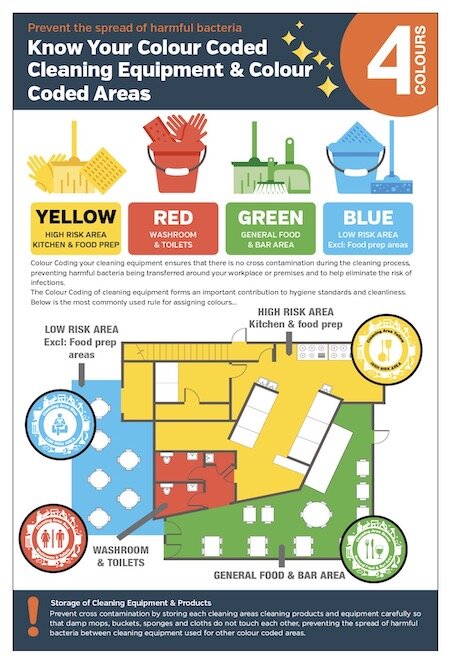The cleaning profession is seeing a colour coding system emerge in different parts of the world. From institutional and hospitality cleaners to caterers, four colours (red, blue, yellow and green) have come to define the products/tools they use. In an effort to create safer environments for everyone, bold hues of these colours help define each category and the tasks they require. Products such as mops, buckets, brooms, dustpans, sponges and cleaning cloths adopt the coding system. Among other things, this system ensures adherence to established hygiene standards by minimizing cross contamination.
Although there is not a universal code in place, the four colour system has been adopted by many. Currently, healthcare and industrial cleaners use a different code than that of restaurants and caterers. Both groups apply red to high risk situations such as restrooms and both use blue for areas where contamination is less risky. Where they differ is in the application of green and yellow. Food industries allocate yellow to kitchens and food preparation areas, whereas industrial cleaners choose yellow for objects and surfaces like counters and sinks. Food industries are using green for public spaces, however, industrial cleaners put green to work in areas of food preparation like company kitchens and lunchrooms.
This simple but effective colour coding system is benefiting many other institutions such as schools, daycares and medical centres. As with other colour coding systems (fire hydrants and construction hard hats) it's not imperative that one code is employed by all. The important thing is for each company and/or location to have a clearly defined plan.

